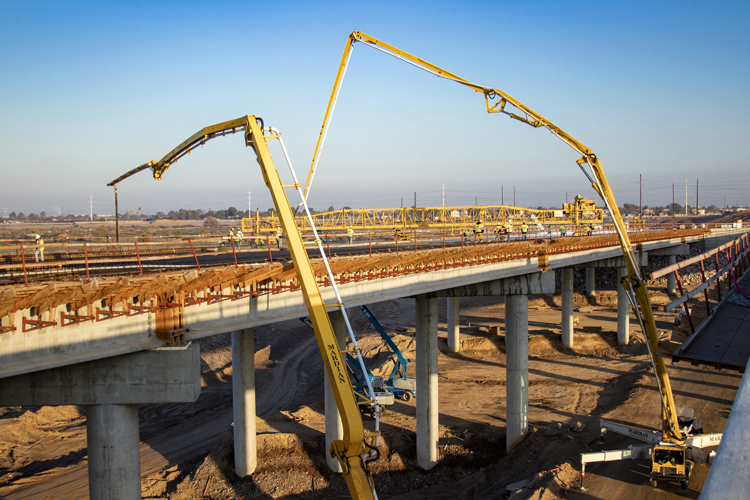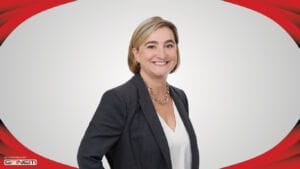As Arizona’s population increases, the state faces difficulties moving the growing population safely and efficiently.
“78,000 people moved to Maricopa County and 20,000 to Phoenix this year, which affects how we move people from place to place,” Tim Strow Transportation Policy and Planning Director at Maricopa Association of Governments said.
Phoenix is one of the fastest-growing cities in the U.S., so ensuring transportation is sustainable remains an issue for the state.
“43 percent of total greenhouse gas emissions city-wide come from transportation,” Tempe Director of Sustainability Dr. Braden Kay said.
In response, Tempe proposed a climate action plan to improve its energy and transportation usage which accounts for 99 percent of all greenhouse gas emissions.
The city plans to work with utility companies to increase renewable energy usage and support businesses that adopt energy upgrades.
Additionally, Arizona plans to invest in alternative transportation options to eliminate single-occupancy vehicles and improve air quality.
“We need to see the internal combustion engine become a thing of the past,” Kay said.
Currently in place is the Tempe Transportation Master Plan of 2040. The plan entails implementing multi-modal streets, ensuring streets are comfortable for biking and walking, using pedestrian and bicycle pathways to connect open space, and expanding light rail, bus, streetcar, and future transportation options.
“Tempe is a model city for sustainable transportation, and we’ve seen some good leadership from Phoenix, Flagstaff, and Tucson as well,” Kay said.
As the state battles transporting the most people most sustainably, factors being considered are multi-modal systems, future technologies, and funding.
Multi-Modal Transportation System
Ensuring Arizona’s cities have efficient light rail systems, public transportation, and bikeable and walkable communities is a large part of making transportation in Arizona more sustainable.
However, driving remains the most popular method of commuting which affects Arizona’s transportation systems.
“Phoenix has a wonderful grid network for commuting, so we’re blessed with a lot of different choices,” Strow said.
One way the Arizona Department of Transportation is currently increasing transportation options for commuters is through the South Mountain Freeway bypass which will create 26 miles of new freeway and is scheduled to open in December.
However, there is only so much expanding and building the state can do, Strow said.
“Oregon is spending no money on highway construction, but we still are in Arizona… If we want to be competitive against states like Oregon and Colorado, we need to step it up when making investments in transportation,” Kay said.
The transportation industry is a multi-billion dollar industry, and Kay argues the money needs to be spent in sustainable ways.
“The state desperately needs to invest in more electric vehicle charging stations because carbon dioxide reduction will be important in the future,” Kay said.
Additionally, Kay supports investing in alternative forms of transportation to limit the number of commuters on Arizona’s interstates.
One way the city of Tempe is doing this is by investing in streetcar development.
“The streetcar will add another layer to Tempe’s multi-modal, comprehensive transportation system that includes more than 16 bus routes, six free Orbit neighborhood circulators, light rail
service and more than 215 miles of bikeways,” Amanda Nelson City of Tempe Public Information Officer said.
This project provides an alternative to driving in dense parts of the city as Tempe’s urban core is projected to grow within the next 20 years.
“Accommodating this growth requires careful planning to ensure that quality of life isn’t compromised, and that includes providing greater access to alternative transportation so people don’t have to drive a car to get where they need to go,” Nelson said.
While major construction can be disruptive to the community, the city of Tempe is providing extra assistance to business owners affected, Nelson said.
This includes providing extra signage and marketing, and low-interest loan opportunities with OneAZ Credit Union and the Tempe Chamber of Commerce.
Another priority is to have a truly multi-modal city by creating a healthier community for biking and pedestrians.
One example is the grand canal multi-use path project which aims to increase safety measures for bikers and pedestrians in the city of Tempe.
Additionally, the Sun Corridor intercity rail project aims to connect the two largest metro areas of Phoenix and Tucson.
A study by MAG says the project will decrease highway congestion and improve travel time by offering an alternate form of transportation.
Future Technologies and Funding
As the state of Arizona makes decisions regarding transportation, they look toward the rapidly growing population to make accommodations.
Strow said autonomous transit, micromobility, and the push for electric vehicles and alternative fuel sources will affect how Arizona transports people in the future.
“The push for electrification of vehicles is going to happen which is fantastic, but it affects transportation funding, specifically the gas tax, which we need to consider,” Stow said. “Everyone needs to pay their fair share when funding the transportation system whether it’s through additional revenue sources or registration fees.”
Additionally, Proposition 400 will expire in 2025. Over the next 2 to 4 years, citizens must decide if they want to continue paying transportation taxes.
“We have to ask ourselves what kind of Arizona we want to see and if citizens are willing to tax themselves for more sustainable transportation and economic growth through multi-modal regions,” Kay said.




